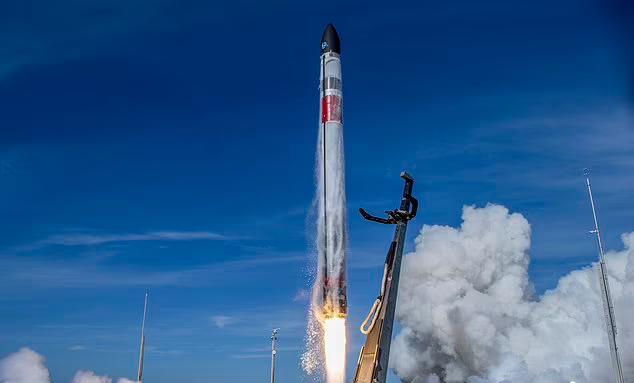At 10:50 a.m. local time on May 3, the rockets of the US space company "Rocket Lab" lifted off on New Zealand's Mahia Peninsula, sending 34 satellites into orbit. Subsequently, the company's helicopters cabled the fallen rocket in the air 1980 meters above the ground.

Rocket Lab's rockets took off at the Mahia Peninsula launch site in New Zealand.
Rocket Lab, a California-based space company, reportedly launches 18-meter-tall (59-foot) rockets into space on New Zealand's remote Mahia Peninsula.
The May 3 launch, dubbed "There And Back Again," included launching 34 satellites for different companies and then, for the first time, capturing falling rocket boosters in the air by helicopter for recycling and reuse.
Nasa also tried to capture the returning Genesis spacecraft in the air in 2004, but without success. That makes Rocket Lab's May 3 attempt a historic first.
The rocket's first stage booster fell at a speed of 8,000 km/h.
On that day, two and a half minutes after liftoff, the rocket's first and second stages separated, the latter continuing into orbit, while the former fell at speeds of more than 5,000 mph (8,000 km/h).
Later, the first stage booster unfurled its parachute, and by the time it entered the "capture zone" over the Pacific Ocean, its descent had dropped to about 22 miles per hour.
Two pilots flew a Sikorsky S-92 helicopter above the rocket.
Two pilots flew a Sikorsky S-92 helicopter (Sikorsky S-92) above the rocket, the helicopter hung a long cable with a hook at the end of the cable, the pilot guided the cable above the rocket and hooked its capture line 1980 meters above the ground.
As seen from the company's live broadcast, when the helicopter cables caught the rocket, the engineers at the Rocket Lab's Mission Control Center in California erupted in cheers and applause.
After a minute, however, the helicopter seemed overwhelmed and forced to release the rocket from the cable, plunging it into the Pacific Ocean.
A completely successful test would have brought the rocket booster back to land or barges without exposing it to seawater.
The pilot directed the cable above the rocket and hooked its capture line 1980 meters above the ground.
Rocket Lab founder and CEO Peter Beck tweeted on the same day that bringing the rocket back from space and catching it with a helicopter was a "supersonic ballet", that the mission was a success, that almost everything went according to plan, that "accidental uninstallation" was a small problem and that "it will be solved soon".
Baker said many factors had to be coordinated and many systems had to work together flawlessly, so he was "incredibly proud" of the efforts of the company's recycling team and all the engineers.
He also said it hopes to save some or all of the rocket booster, even though it is soaked in seawater, and the company hopes to avoid that.
Rocket Lab hopes to reduce the cost of sending astronauts, satellites and cargo into space by reusing rockets — an industry trend pioneered by billionaire entrepreneur Elon Musk's space exploration technology company SpaceX.
Text/Nandu reporter Chen Lin